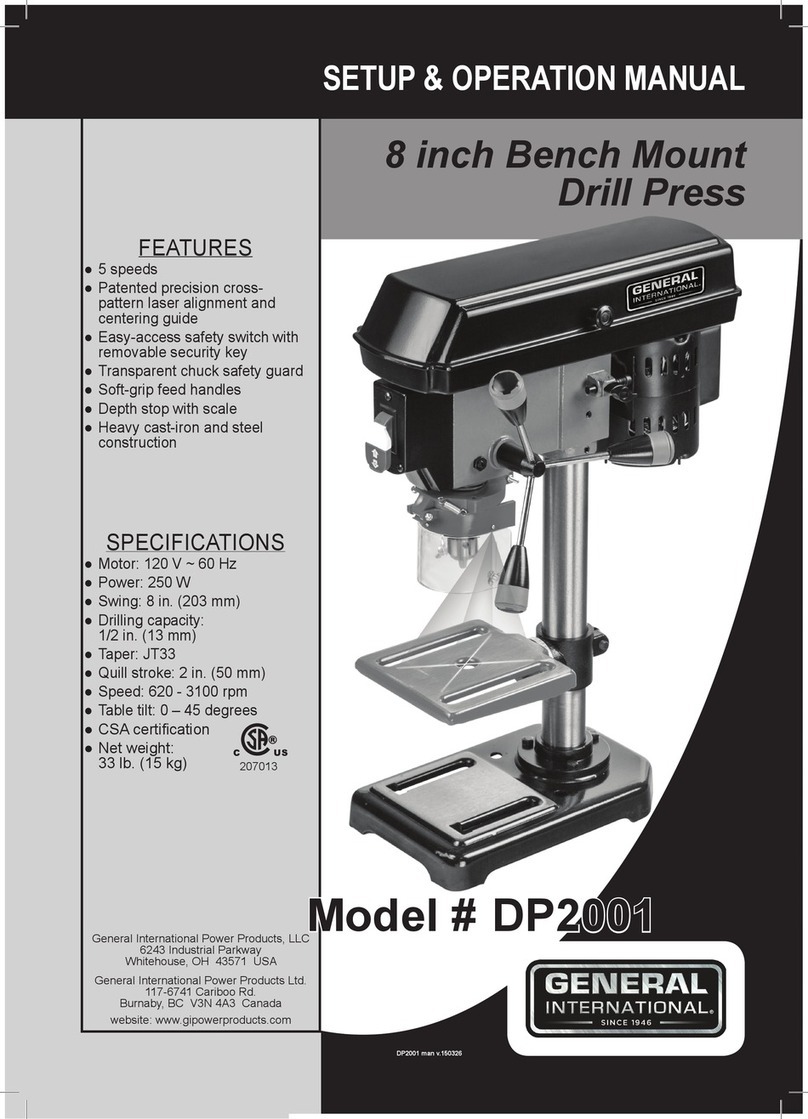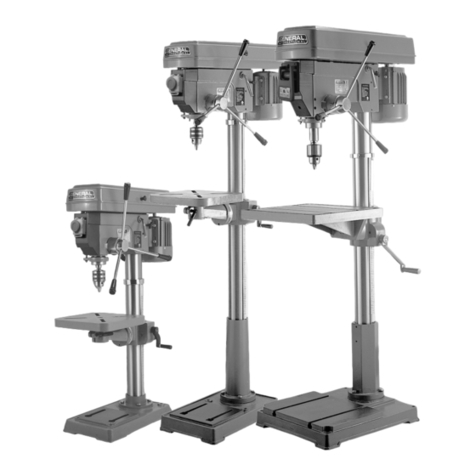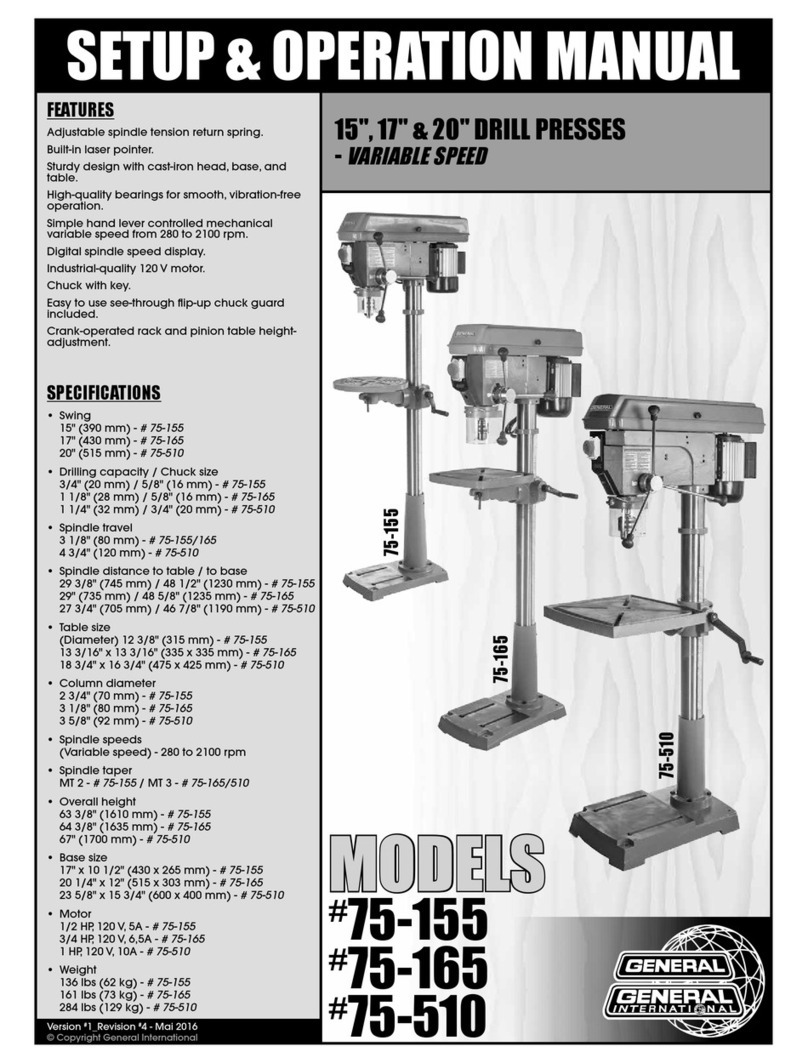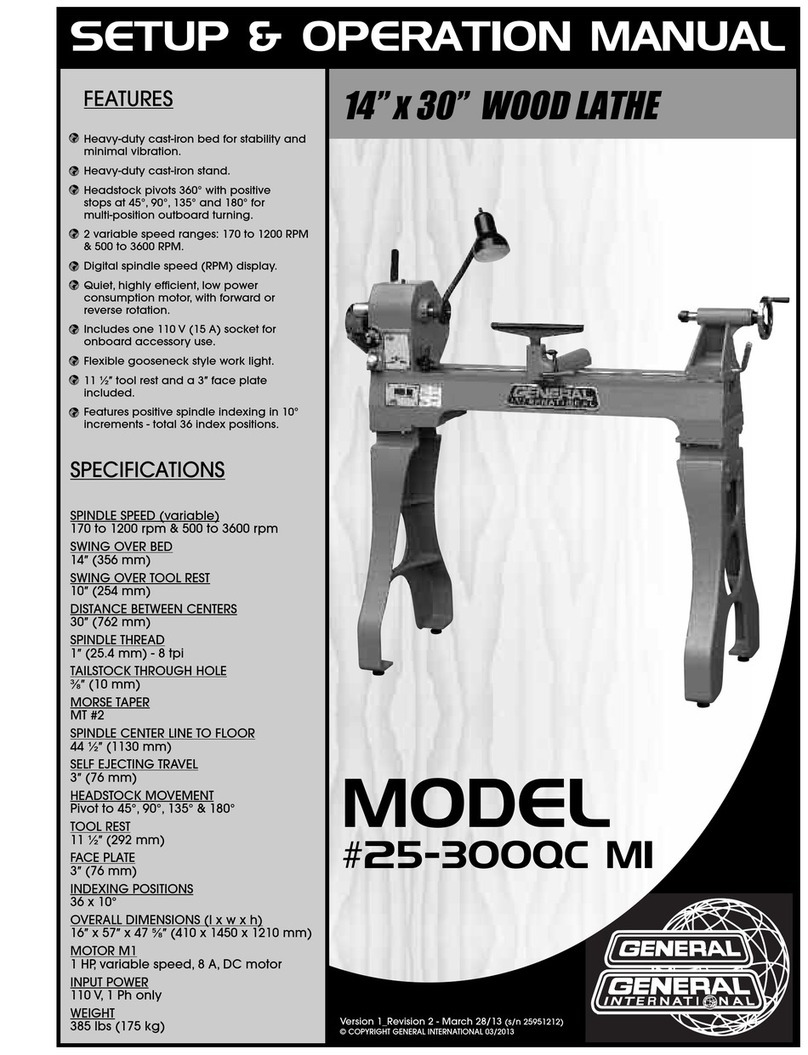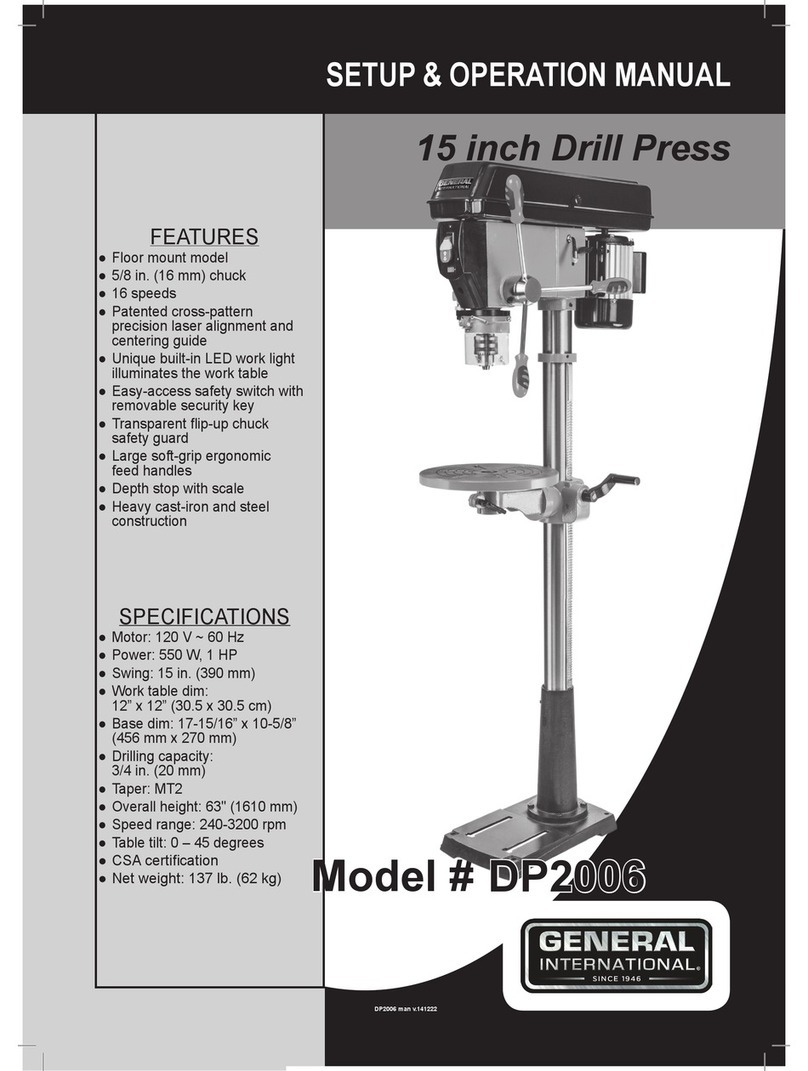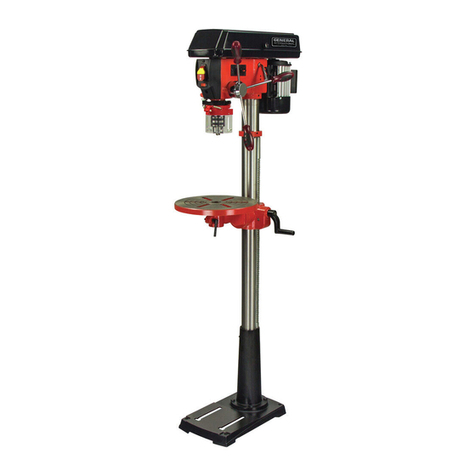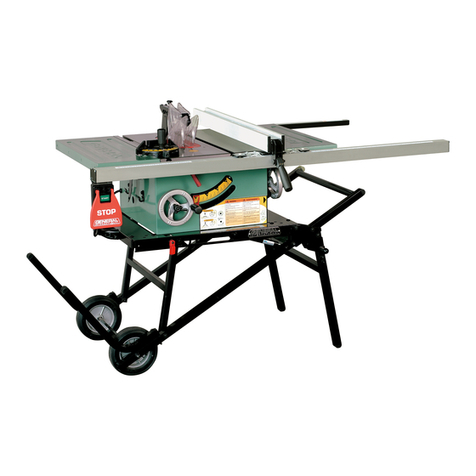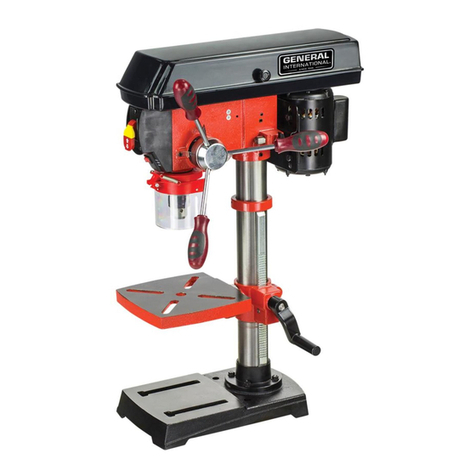
GRAIN DIRECTION
The work piece should always be shaped in the same direction as the grain (if possible). When
cut against the wood grain, woods as redwood, fir and oak will leave a rough, or slightly
splintered edge.
CAUTION: When deep cuts are required, they will need strong power and a pushing force in
order to control the cut. Deep cuts can also cause the wood to split or splinter, this may lead to
loss of control or injures to the work operator. When a finished edge is not to your satisfaction,
cut a few more times with no more than 1/16" deep. Pre-cut stock on band saw 1/16" whenever
possible.
The trailing board edge will splinter when shaping across the grain. The best solution would be
to cut the board 1 /4" oversize in width shape the board and simply trim off the excess.
STRAIGHT EDGE SHAPING •
The work piece must always be against the fence to
perform straight edge shaping, follow these procedures to
set up:
1. Disconnect machine from the power source.
2. Fence faces must be parallel, properly in line or offset If
necessary,
3. Cutter must be rotated and inspected for clearance.
4. Position the leading face of a cutter head blade at 90
degrees to the infeed fence and adjust the spindle to
the desired height of the cut. At the same time check
the desired depth of cut with the blade in the 90
degrees position.(Fig. 20)
DEPTH OF CUT
The depth of cut is the distance from the outside circumference edge of the collar which the
work rides against to the outside edge of the cutter. The depth of the cut is determined by the
position of the fence relative to the cutter head or by the use of shaper collars.
1. Spindle must be locked.
2. Right guard should be installed wherever possible.
3. Connect to the power source.
Note: To determine if the cut, profile and depth are correct you will only need a short cut.
5. Make adjustments if required, or proceed shaping using the work piece.
EDGE SHAPING: LONG BOARDS
The work piece must be at least 12 inches long when edge
shaping long boards.
1. To hold work piece down and against the fence use the
hold -downs and horizontal clamps. If the work piece is too
wide for the horizontal clamps(Fig. 21), clamp a scrap board to
the table to keep the work piece against the fence.
3. To make a smooth cut the work piece should be fed slowly
and steadily with firm, even pressure. Note: The rate feed depends
on depth of cut and experience of operator.
